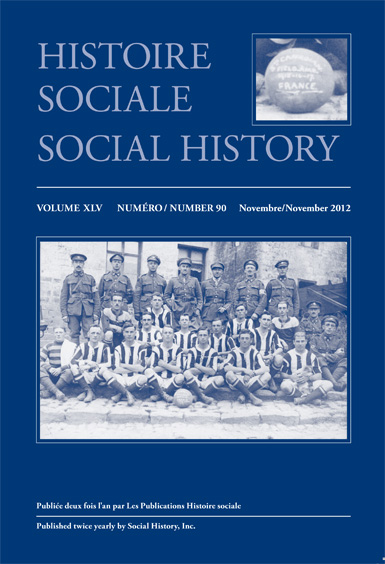Le don de soi. La valeur des tableaux dans les testaments épiscopaux français (fin XVIIe–fin XVIIIe siècle)
DOI :
https://doi.org/10.1353/his.2012.0021Résumé
Souvent abordées comme élément d'une culture matérielle, certaines images se voient néanmoins offrir un sort particulier dans les testaments épiscopaux du XVIIIe siècle. Cette singularisation se rattache à leur capacité à cristalliser quelque chose du donateur. Commencer par mettre en avant le processus de particularisation des fluvres (selon la façon dont elles sont décrites, leur lieu d'exposition ou l'histoire dont elles sont porteuses), c'est se mettre en état de comprendre comment ces images viennent matérialiser et renforcer des liens d'affection ou de service. La façon dont ces différentes valeurs reconnues aux fluvres interfèrent et jouent selon les donataires permet de saisir l'équivalence que les év'ques établissent entre la valeur de l'objet donné et la valeur du donataire, m'lant ainsi le matériel, l'affectif et le social. Conçue comme une étude des conditions contribuant à la particularisation des objets ainsi qu'à leur participation aux << économies affectives >>, la présente étude se veut aussi une contribution à une histoire de la valeur des fluvres, abordée d'un point de vue moins ontologique qu'historique et social. Although paintings are often seen as part of material culture, the wills of 18th-century bishops have reserved a special fate for certain works. The singular aspect of these works resides in their ability to embody an aspect of the donor. Focusing on this singularization process (by the way the paintings are depicted or exhibited or by the stories they convey) allows us to understand how these images build and strengthen links of affection or service. The way the various values associated with paintings interact and play out depending on the recipient reflects the perceived equivalence in the bishop's mind between the value of a gift and the value of the recipient, and serves to intermingle related material, affective, and social aspects. The aim of this study is to identify the conditions contributing to the singularization of objects and their involvement in affective links. It is also intended to contribute to the history of the value of art, with less emphasis on the ontological than on the historical and social.Téléchargements
Numéro
Rubrique
Articles


